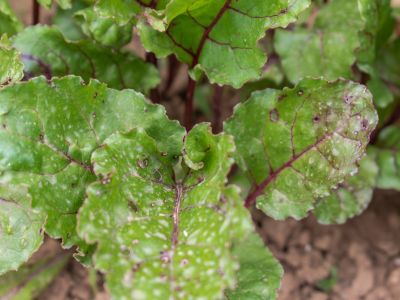What is Cercospora?
Fruit and crop management is an ongoing process. One of the key aspects is inspection of fruits and vegetables for disease and preventative measures early in the season to protect the crop. Cercospora leaf spot or fruit spot is a fungus that requires moisture and is wind borne. The disease survives in dormant lesions from previous season fruit. Once warm, wet weather starts, the fungus disseminates condida, which are similar to a spore. These condida transfer from rain splash, mechanical transfer, or wind. The full name for this fungal disease is Pseudocercospora angolensis. Leaves of affected plants will produce circular spots with light brown to grayish centers. When the rainy season sets in, these spots become dark and almost black with a yellow halo. Leaves generally fall off after a period. Stem lesions are not frequent but you may find twig dieback. The fruit gets dark spots that may produce a tumor-like growth surrounded by a halo. These will sink in and develop necrosis. Early fruit that is immature will drop. Cercospora fungus in mature fruits will dry up and become tough. Symptoms are slightly different on various crops. Okra will develop a sooty mold on leaves and carrots get more necrotic spots on young leaves. Roses will develop cercospora leaf spot as lesions and dark sunken areas on the leaves. Other crops affected are:
Bean Beetroot Capsicum (peppers) Watercress Avocado Fig Coffee
Cercospora Fungus Damage
In well managed crops, it does not usually run rampant but the disease can produce unsavory fruit and diminish harvest. To preserve the best fruit, treatment of cercospora should start with cleanup of downed fruit at the end of the season and commence with fungicides applied in the spring. In small infestations, the few fruit affected will not limit crop yield much, but in heavily diseased plants, the entire crop may become useless. Not only are fruits unsightly and unappetizing, but they are not juicy or tasty. The necrotic areas from cercospora fruit spot are dry, tough, and woody in some species, creating a poor eating experience. These rather ugly fruits are impossible to sell and provide a dilemma as to disposal. In the compost pile, the fungus can survive unless temperatures are hot enough to destroy the condida. Fruit cleanup in affected areas is necessary to prevent the spread of cercospora leaf spot in the next season’s crop.
Treatment of Cercospora
In addition to cleaning up dropped fruit, it may be necessary to destroy heavily infected crops in fall. There are also fungal sprays and dusts recommended for control of cercospora. Treatment must begin in the wet, rainy season when temperatures have warmed. It is advised to rotate the chemicals used yearly to minimize the chance of resistance. A second application may be required in wet, humid regions. Use all sprays and dusts in a manner consistent with the manufacturer’s instructions. If you are in doubt, use a licensed professional to apply the treatments.
